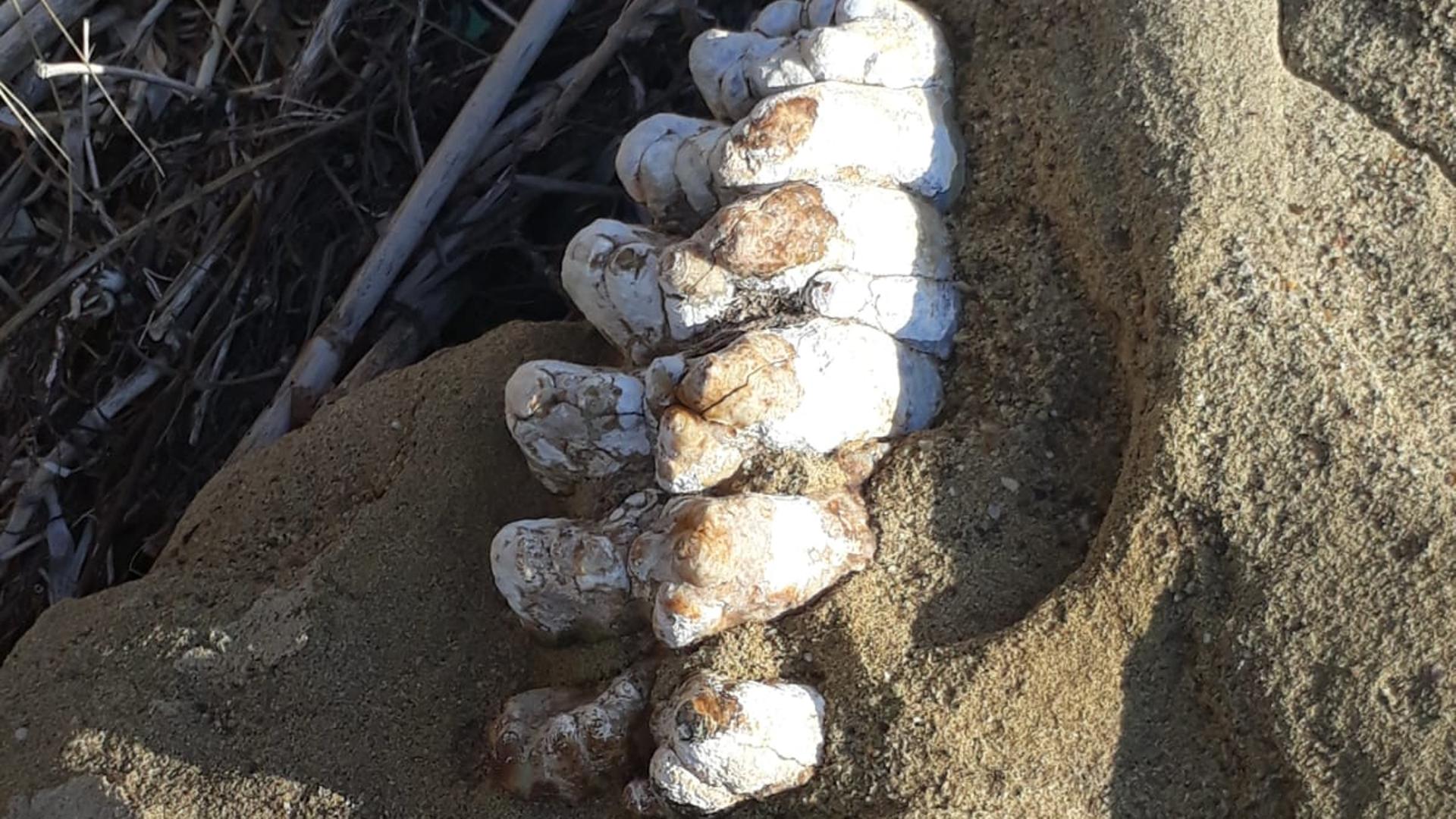- 2 days ago
Serdar Mayda has a background in Geology Engineering, with a master’s degree in Paleontology and a doctorate in Biology. He has been working on vertebrate paleontology for the past twenty years.
According to Mayda, the remains were found by a group of fishermen in Canakkale’s Ezine district, on the shores of Yenikoy. Shortly thereafter, the fossilised samples were taken to Canakkale Troya Museum with the leadership of Canakkale Onsekiz Mart University’s (COMU) Engineering Faculty Geology instructor, Sevinc Kapan.
“The remains belong to a tusked mammal (Proboscidea) that lived about nine million years before our time and two different animals. These fossils consist of a semi-adult animal molar tooth and a baby tooth belonging to a young animal,” Mayda tells TRT World in an email.
“In light of the morphological and biometric data the teeth present, I can say that the remains belong to what appears in the literature as the ‘shovel-tusk elephant’ or the ‘Mastodon’ grandincisivus that lived during the early stages of the late Miocene Era in Southeast Europe, Anatolia, the Middle East and Iran,” he adds.
This species is an ancestor of modern elephants, and occupies a controversial systematic position. It is a rare species, found in fossil beds in small numbers in the last 80 years in Turkey in Tekirdag, Enez, Istanbul – Kucukcekmece and Rami areas.
“The animals weighed more than five tonnes and their dimensions were close to African elephants. For example, a significant difference to other findings in Turkey,” Mayda says, “is that the remains in Yenikoy are much larger than all other samples of this species.”
“Paleontology, to give a short description” Mayda tells TRT World, “is the branch of science exploring organisms who lived in the past with the help of fossils. Fossils hold a mirror to the past.”
“A fossil gives clear clues to the approximate body form of the animal because it is a preserved version of the organism’s outer and/or inner skeletal structure,” he adds. “These forms also help us discern the close family ties of the fossil organism.”
“Turkey was a crossroads country in the Tertiary Period between Europe, Asia and Africa,” Mayda writes. “It was on the migratory path of mammals, as well as being a big geographical province that allowed many endemic fauna to evolve.”
According to Mayda, there are vertebrate fossils going back 200 million years, and mammal fossils going back 55 million years. Meanwhile, invertebrate fossils go back 500 million years. “Our country is one of the important countries in Europe based on fossil beds.”
Mayda says that every year, for the last forty years, there has been paleontological surface research and many excavations carried out with the oversight of the ministry [of Culture and Tourism],“which is why Turkey has a very rich fossil inventory. In these excavations, every year there are very special remains dug up belonging to very special fossils.”
“This fossil ‘Mastodon’ and also in light of other fossil species from the area we can say that nine million yeas ago on both shores of Canakkale there was a subtropical climate and a lush forest covering.”










Discussion about this post